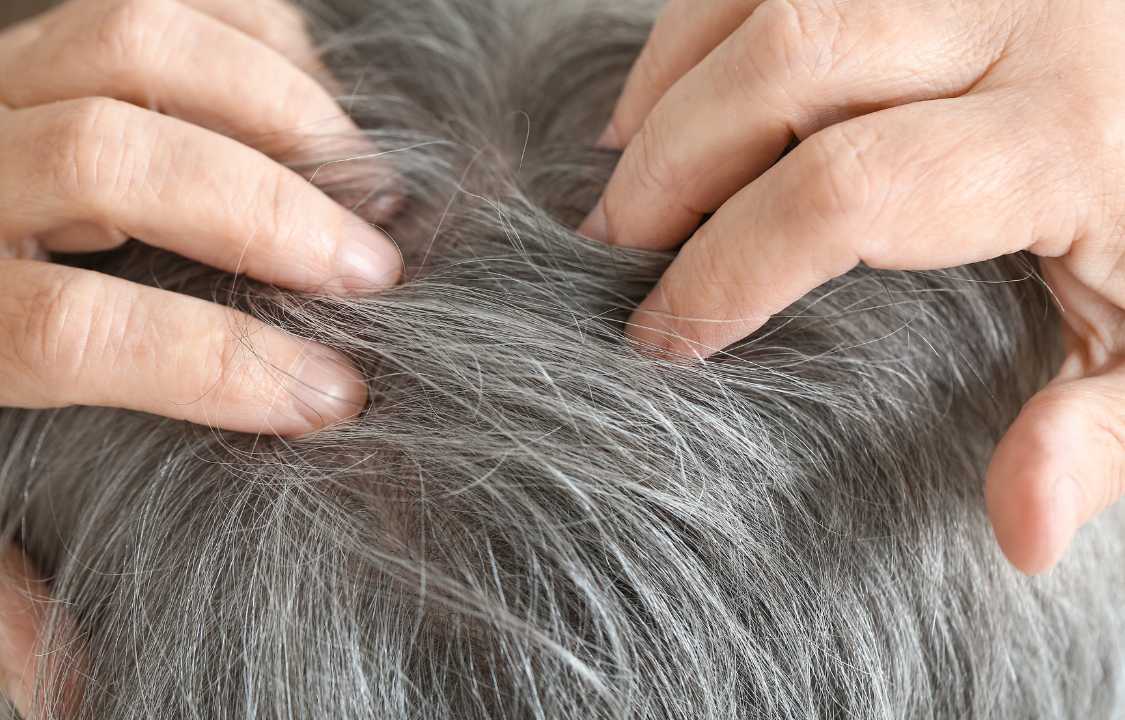Health Care
Causes of Premature Gray Hair
Graying is a natural part of aging, but it tends to start earlier in some than in others—here’s why.
Gray hair is a natural and often noticeable sign of aging. However, the appearance of gray hair is influenced by a range of factors, and it doesn’t necessarily signify a decrease in your life expectancy. This comprehensive guide delves into the various causes of gray hair, explores the phenomenon of premature graying, and discusses whether it’s possible to reverse this process. By understanding the science behind gray hair and its triggers, you can make informed choices about its management.
What Causes Gray Hair?
Gray hair primarily results from a decrease in melanin production, the pigment responsible for hair color. Melanin also determines the color of your skin, eyes, and even the presence of freckles. Scientists believe that the stem cells responsible for producing melanin may become depleted, damaged, or lose their support systems over time. Additionally, various factors contribute to changes in hair color, including:
1. Age: Gray hair is a natural consequence of aging, as melanin production gradually decreases with time.
2. Body Distribution: The distribution of gray hair on your body can vary, with some areas graying faster than others.
3. Climate: Environmental factors, such as exposure to different climates, can influence the rate at which your hair turns gray.
4. Chemical Exposure: Exposure to chemicals in hair products or environmental pollutants can affect melanin production.
5. Genetic Defects: Some individuals may have genetic predispositions that lead to premature graying.
6. Hormones: Changes in hormonal levels, such as those occurring during menopause, can impact hair color.
7. Pollutants and Toxins: Exposure to pollutants and toxins in the environment may contribute to graying.
Understanding White Hair vs. Gray Hair
Gray hair is characterized by a reduction in melanin, while white hair completely lacks melanin. Melanocytes, the cells responsible for melanin production, are found in the hair follicles where individual hair strands grow. Over time, these melanocytes produce progressively less melanin, eventually ceasing production altogether. As a result, hair loses its color, turning gray. When melanin production ceases entirely, the hair becomes white.
Causes of Premature Graying:
Premature graying, occurring earlier than typical age-related graying, may have various causes, including:
1. Ethnicity: The age at which premature graying is considered normal varies among different ethnic groups. For instance:
- Whites may experience premature graying before age 20.
- Asians may notice it before age 25.
- Blacks may encounter it before age 30.
2. Smoking: Smoking is linked to premature graying, and the longer one smokes, the higher the risk of early graying becomes.
3. Environmental Factors: Exposure to environmental factors like ultraviolet rays and air pollutants may contribute to premature graying.
4. Stress: Psychological stress has been associated with premature graying, possibly due to the impact of “free radicals” generated by stress, which can damage pigment-producing melanocyte stem cells. A 2021 study even established a link between psychological stress and graying hair.
5. Medical Issues: In rare cases, premature graying can be a symptom of underlying medical conditions such as vitiligo, pernicious anemia, or problems with the pituitary or thyroid glands.
6. Genetic Causes: Certain genetic diseases, such as albinism, Chédiak-Higashi syndrome, Griscelli syndrome, and Waardenburg syndrome, can cause premature graying.
Can Gray Hair Be Reversed?
While the appearance of gray hair can be distressing for some, there is hope for those just beginning to notice graying. Research suggests that eliminating stressors can potentially lead to a temporary return of natural hair color. However, if you’ve had gray hair for an extended period, it’s less likely that it will revert entirely to its original color. Gray hair is a natural part of the aging process, and there comes a point where reversal becomes impossible. Nevertheless, managing stress can still yield numerous health benefits beyond its potential effect on hair color.
Conclusion
Gray hair is a ubiquitous phenomenon that transcends age, ethnicity, and culture. The transformation from pigmented locks to silver strands is primarily influenced by genetics, with a family history often dictating when and how it occurs. Age, as one of the most influential factors, brings about changes in the melanin-producing cells responsible for hair color, leading to a gradual loss of pigmentation.
Premature graying, however, can raise concerns, especially when it appears earlier than expected. Several lifestyle factors have been associated with early onset graying, such as smoking, a notorious contributor to oxidative stress that affects melanocytes. Stress, both emotional and physical, can also play a significant role. The body’s response to stress can interfere with melanin production, pushing the aging process forward prematurely.
Certain medical conditions, like thyroid disorders and vitamin deficiencies, can accelerate the graying process. Thus, keeping an eye on your overall health and consulting a healthcare professional when noticing unusual changes in your hair color is essential. They can help identify underlying health issues and recommend appropriate treatments or dietary adjustments.
Despite these potential causes of premature graying, it’s important to recognize that gray hair is often a natural aspect of growing older. It symbolizes a life rich in experiences and wisdom. Embracing this transformation and adopting a positive attitude towards it can significantly impact your self-confidence and overall well-being.
Managing stress is another crucial aspect of maintaining healthy hair. Practicing relaxation techniques, such as meditation or yoga, can mitigate the adverse effects of chronic stress on hair pigmentation. Adopting a healthy lifestyle, including a balanced diet rich in antioxidants and vitamins, can also promote hair health and potentially slow down the graying process.
In conclusion, understanding the complex factors behind gray hair can help individuals cope with this inevitable part of aging. While premature graying may be influenced by lifestyle and health factors, embracing the natural progression of aging with a positive attitude can lead to enhanced self-confidence and well-being. Remember, the color of your hair doesn’t define your worth or beauty; it’s a testament to the journey of life.

